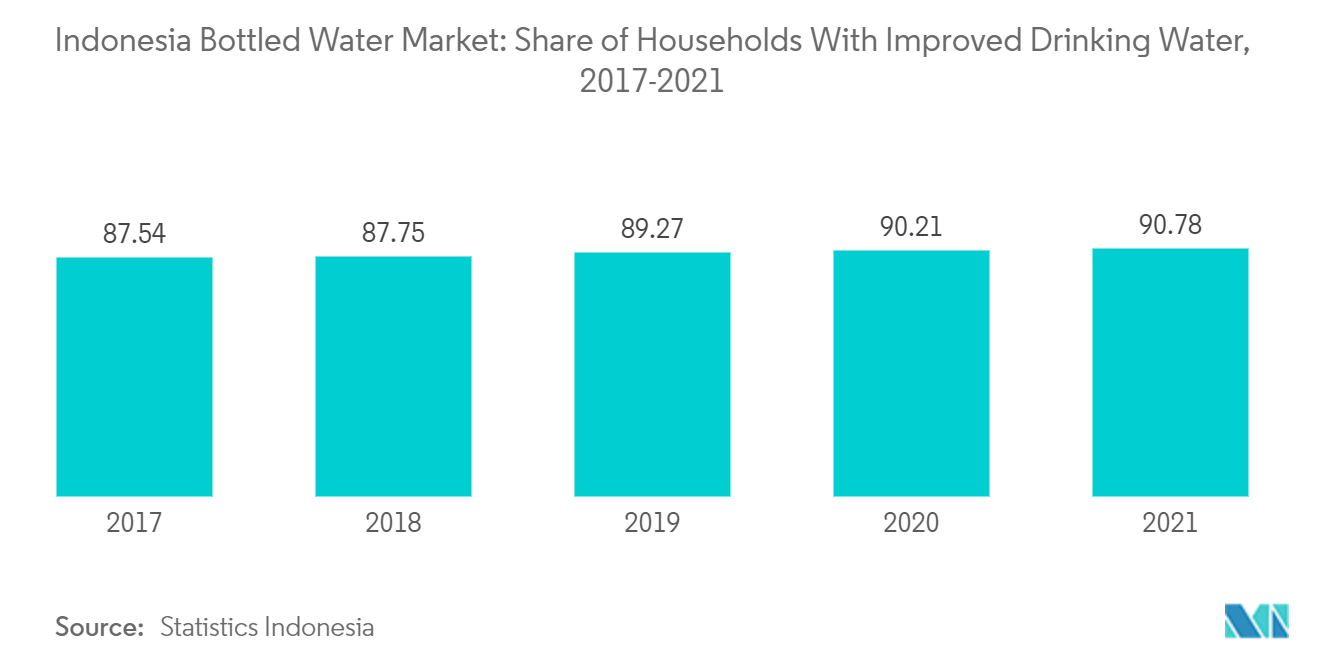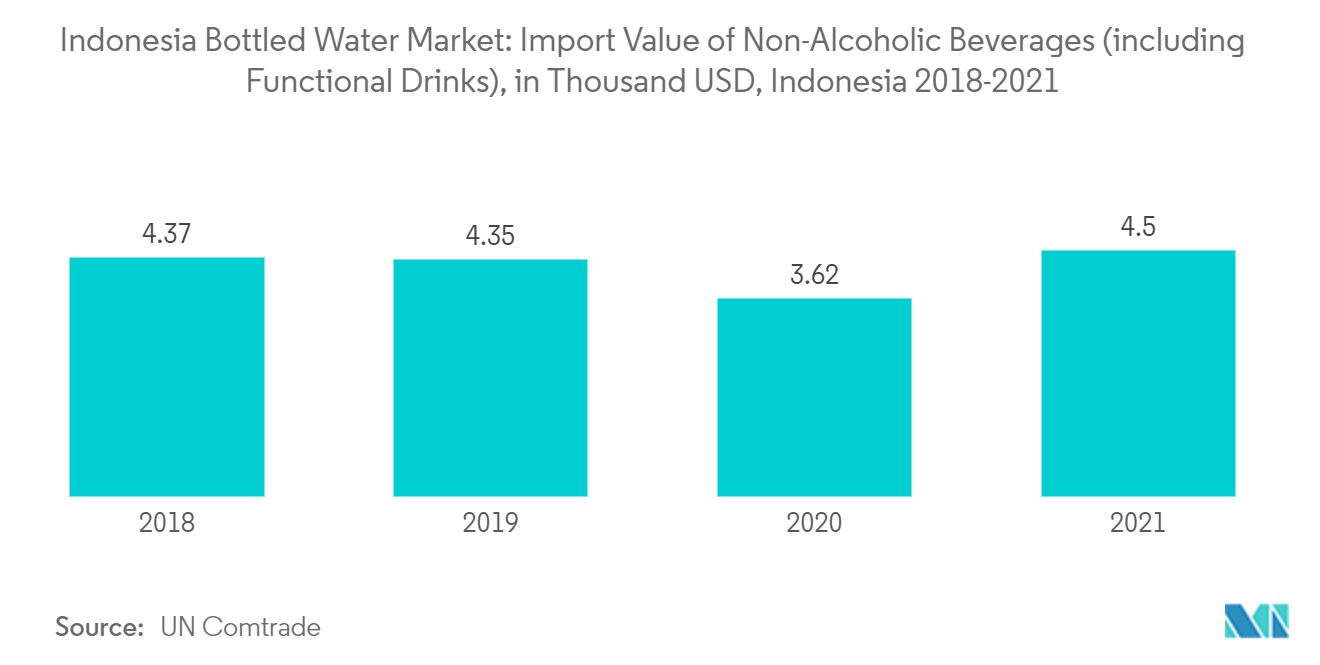Market Trends of Indonesia Bottled Water Industry
Increasing Expenditure on Drinking Water Due to Lack of Safe Drinking Water Availability
Lack of access to safe water sources is a leading risk factor for numerous infectious diseases, including cholera, diarrhea, dysentery, hepatitis A, typhoid, and polio. Most of the urban population in Indonesia is concerned about the quality of tap water, especially in regard to taste and consistency. This resulted in a rising demand for bottled water in Indonesia.
According to World Bank data, Indonesia had 273.75 million citizens as of 2021, making it the world's fourth most populated nation; thus, the country seeks to meet the need for safe drinking water for its citizens' health. According to water.org, although Jakarta, the nation's capital, is developing as a global hub, the infrastructure and health of rural populations and those living in urban slums continue to be problems for them. Many homes lack access to clean drinking water because the sources are too remote, expensive, or contaminated. According to Water.org, in Indonesia, approximately 20 million people lack access to better sanitation facilities, while 18 million lack access to safe water.
Growing consumer awareness of health and wellness has led to a demand for bottled water. The purity of the water is often highlighted as a unique selling proposition by the market players, while some brands add functionality, which boosts the value. Due to rising concerns about the quality of water, the government is increasingly implementing new labeling requirements to tackle the counterfeiting of bottled water. The government is taking major initiatives for safe drinking water in the country, including tightening product controls and changing the labels on bottles in an attempt to enhance transparency regarding the quality of bottled water.

Flavored/ Functional Water is the Fastest Growing Segment
The flavored water segment of the market studied experiences major competition from substitute drinks. The calorie balance and the amount of sugar present in the water are the two challenging factors that have an impact on the market. The market has a great potential for growth due to the addition of additional flavors, and consumers perceive that additional fruit extracts would improve the nutritional benefits. With the increase in market penetration, the key players also tend to come up with new combinations of flavors, such as kiwi, lemon, raspberry, and strawberry.
Functional water is gaining popularity in Indonesia with the growing consumer trend toward health and wellness. The property of functional water is to have a lower calorie content than other soft drinks; offering more taste appeal than plain water is an attractive proposition to many consumers. Functional water is fueled by new formulations and improved marketing schemes. In terms of flavors, citrus varieties dominate the market studied, but the market studied has witnessed the penetration of various new flavors.
Functional waters continue to account for a small proportion of the market studied. The development has been held back to some extent by the premium pricing of these products. However, the health and diet needs of different consumer groups and tapping into young consumers' willingness to experiment with products that offer credible health benefits are expected to boost the market during the forecast period.


